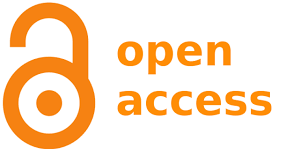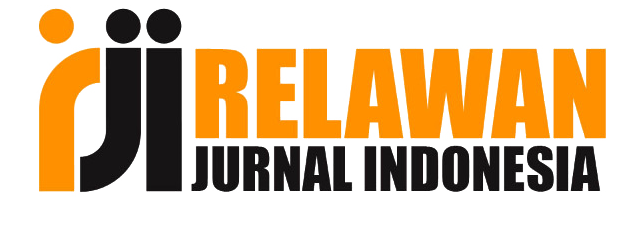Analysis of the influence of assets, liabilities and equity on the profitability of Bank KB Bukopin Syariah 2019-2023
Abstract
This research is expected to increase insight and knowledge regarding the influence of assets, liabilities and equity on profitability at Bank KB Bukopin Syariah in 2019-2023. In determining the sample in this research, the purposive sampling method was used. The device used in this research to process and analyze existing data is Eviews version 10 software. Research results show that assets have a significant effect on the profitability of Bank KB Bukopin Syariah in the short term, which means increasing assets are followed by increasing profitability. However, in the long term, assets do not have a significant effect on profitability. Liabilities have a significant effect on the profitability of Bank KB Bukopin Syariah in the short term. However, in the long term, liabilities do not have a significant effect on profitability. Equity has no effect on the profitability of Bank KB Bukopin Syariah in the short and long term. Assets, Liabilities and Equity simultaneously have a positive and significant effect on Profitability(Y) Bank KB Bukopin Syariah.
Keywords
Full Text:
PDFReferences
Fitria. (2017). Asset tetap. Journal of Chemical Information and Modeling, 53(9), 1689–1699.
Hafizh, M., Hidayah, N., & Silalahi, P. R. (2020). Macroeconomics And Profit Sharing Financing In Islamic Banking In Indonesia: The Third Parties Fund As Intervening. Jurnal Akuntansi dan Keuangan Islam, 8(2), 131–147. https://doi.org/10.35836/jakis.v8i2.183
Herison, R., Sahabuddin, R., Azis, M., & Azis, F. (2022). The Effect of Working Capital Turnover, Accounts Receivable Turnover and Inventory Turnover on Profitability Levels on the Indonesia Stock Exchange 2015-2019. Psychology and Education, 59(1), 385–396. www.psychologyandeducation.net
Irham, fahmi. (2013). Analisis Laporan Keuangan. Bandung(2013), 5–24.
Kurniawan, A., Rahayu, A., & Wibowo, L. A. (2021). Pengaruh Transformasi Digital Terhadap Kinerja Bank Pembangunan Daerah Di Indonesia. Jurnal Ilmu Keuangan Dan Perbankan (JIKA), 10(2), 158–181. https://doi.org/10.34010/jika.v10i2.4426.
Muhammad Hafizh. (2019). Pengaruh Makroekonomi Terhadap Dana Pihak Ketiga Serta Dampaknya Terhadap Pembiayaan Pada Perbankan Syari’Ah Di Indonesia. 1–23.
Muniarty, P., Abbas, D. S., AK, M. F., Sugiri, D., Nurfadilah, D., & ... (2020). Manajemen Perbankan. https://repository.penerbitwidina.com/ru/publications/328999/manajemen-perbankan%0Ahttps://repository.penerbitwidina.com/media/publications/328999-manajemen-perbankan-7c40405b.pdf
Musa, M., Alhabshi, S. M., & Haron, R. (2022). Optimization of solvency margin in family Takaful and Life Insurance Institutions in Malaysia: Application of Data Envelopment Analysis. Journal of Islamic Accounting and Finance Research, 4(1), 155–182. https://doi.org/10.21580/jiafr.2022.4.1.8792
Ninda Kusuma Wulandari, Ali Riza Fahlevi, Cantika Adelia, Dewi Kusmayanti, & Nike Sekariesta. (2023). Pengaruh Liabilitas Dan Ekuitas Terhadap Profitabilitas (Studi Pada Perusahaan Perbankan Yang Terdaftar Di Bursa Efek Indonesia Tahun 2019-2021). Jurnal Publikasi Ekonomi Dan Akuntansi, 3(3), 377–388. https://doi.org/10.51903/jupea.v3i3.869
Rahman, A. F., & Setiawansi, Y. (2021). Analisis Determinan Dana Pihak Ketiga Bank Umum Syariah di Indonesia. Jurnal Ilmiah Ekonomi Islam, 7(1), 154. https://doi.org/10.29040/jiei.v7i1.1608
Sahetapy, I. F. (2023). Pengaruh Liabilitas Dan Ekuitas Terhadap Laba Bersih Pt Bank Rakyat Indonesia (Persero) Tbk Periode 2015-2022. Jurnal Akuntansi Trisakti, 10(2), 343–356. https://doi.org/10.25105/jat.v10i2.17932
DOI: https://doi.org/10.52626/jg.v7i2.347
Refbacks
- There are currently no refbacks.
St. Teknik II, Reumpet, Krueng Barona Jaya sub-district (23370), Aceh Besar District, Aceh Province, Indonesia.
http://geutheeinstitute.com/








